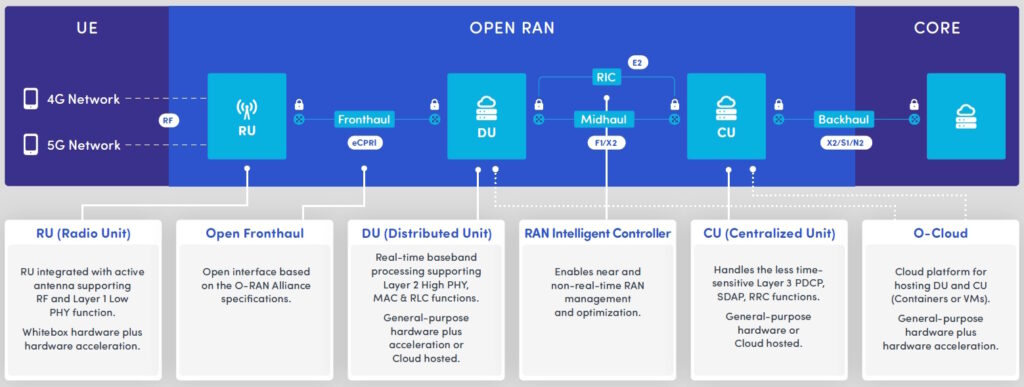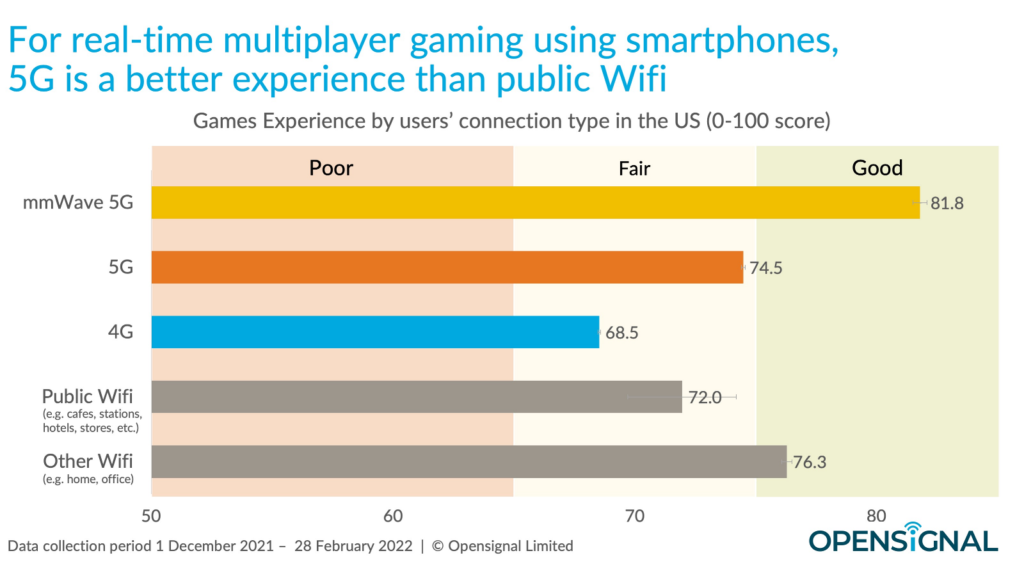Challenges in integrating and testing Open Radio Access Networks (O-RAN) stem from their multi-vendor architecture. O-RAN comprises separate components like radios, baseband units, and software from different vendors, leading to complexity in ensuring seamless operation.
O-RAN was designed to enhance flexibility, competition, and cost-efficiency compared to traditional RAN solutions. The intricate sub-systems within O-RAN must harmonize effectively.
This piece offers an insight into the O-RAN architecture, delves into the complexities of testing and integration, and underscores the necessity of automation for successful implementation.
Situated between user equipment (UE) and the network core (Figure 1), O-RAN components must adhere to 3GPP standards and O-RAN Alliance specifications. Critical elements include:
- Radio units (RU) that handle digital data and RF signals, incorporating beamforming and antenna arrays.
- The distribution unit (DU), also known as the digital unit, responsible for real-time baseband processing and lower-level radio tasks like MAC and RLC.
- RAN intelligent controller (RIC), a software component facilitating the disaggregation of RAN elements. The RIC serves as a central hub for real-time data collection across the RAN, making decisions on resource allocation, load balancing, interference management, and more. Additionally, the RIC leverages AI and ML algorithms to enhance network efficiency.
- A centralized unit (CU) managing higher protocol stack layers such as RRC, SDAP, and PDCP.
Testing complexities
Testing O-RAN poses a challenge in ensuring compatibility across multiple vendors. Open interfaces in O-RAN amplify testing complexities and troubleshooting due to the myriad configurations and interactions among elements from different vendors. Pinpointing issues can be daunting, particularly in multi-vendor O-RAN setups.
Performance validation necessitates testing the collective operation of all O-RAN elements under peak traffic conditions to guarantee anticipated performance levels, encompassing throughput, latency, call quality, and more. For instance, seamless data transfers between RUs and DUs from diverse vendors are imperative. Testing should also validate the harmony of management and configuration tools from varied vendors.
Testing framework
O-RAN testing encompasses nodal, adjacent, end-to-end, and security testing. Nodal testing validates specific O-RAN elements by integrating elements like DU or CU with emulated network functions and traffic to simulate real-world conditions. Nodal testing is conducted at peak performance levels to ensure consistent reliability.
Adjacent testing involves integrating and testing elements with neighboring network functions, such as testing RU with DU and DU/CU with RIC. This may involve elements from the same or different vendors. Adjacent testing is pivotal for ensuring interoperability at scale in a dynamic network environment.
End-to-end testing culminates the process, evaluating the entire O-RAN at scale for all anticipated services, including voice, data, video, emergency services, etc.
Security is paramount as O-RAN integrates elements from diverse vendors, expanding potential entry points and attack surfaces. Security testing should cover individual elements and end-to-end scenarios emulating various attack vectors.
Automation for seamless integration
Automation is indispensable for ensuring O-RAN interoperability. It facilitates the integration and management of equipment from multiple vendors, eliminating laborious manual configurations and verifications.
Devoid of automation, O-RAN advantages like agility and efficiency may be compromised. From this standpoint, O-RAN testing revolves around three primary scenarios: conformance, interoperability, and end-to-end testing, all interconnected through automation (Figure 2). Each element entails a set of testing protocols to ascertain that O-RAN products meet specified requirements individually and in conjunction with other products within the network.
Conclusion
The advantages of enhanced flexibility, competition, and cost-effectiveness with O-RAN come alongside more intricate integration and testing hurdles. Individual elements like DU and CU need meticulous testing to ensure performance and compatibility with diverse vendor components. Vendor diversity also heightens the challenge of securing O-RAN.
References
Consistent and Repeatable Testing of O-RAN Distributed Units (O-DU) across Continents, Arxiv
How automated testing can help address the Open RAN deployment challenges, Ericsson
Meeting the Complex Challenge of O-RAN Testing, Spirent
Open RAN integration: Don’t go it alone, Fujitsu
Revolutionizing Radio Unit Testing, LitePoint
Solving Test and Integration Challenges for Open RAN, Keysight
Testing can make Open RAN a success, Rohde & Schwarz
Related Content on EEWorld Online
5G Over-the-Air Testing: An update
5G radios increase emphasis on compliance testing
Open RAN rewrites network-testing rules
How do you test an Open RAN installation?
Why open RAN needs testing to ensure interoperability





